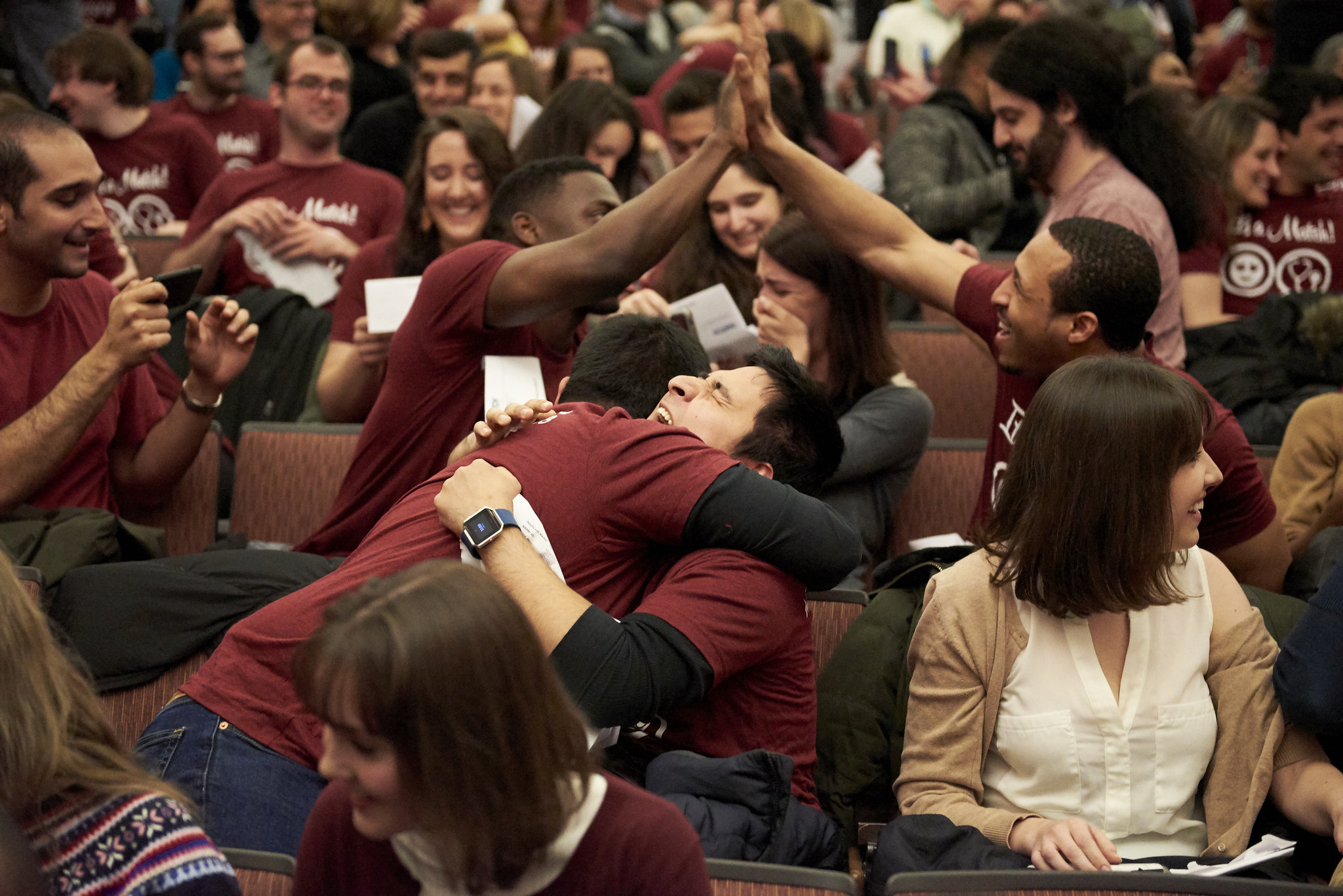Dating in medical school means making big relationship decisions sooner than you might otherwise. By the middle of the fourth year of medical school, as a couple you will have to start thinking about whether you will enter the match as individuals or together. In a way, this decision can feel like deciding if you truly want to spend your life with this person, which may require some career sacrifices in order to do so. For some who are married, with children or otherwise very seriously committed, this is a no-brainer. For us, two individuals who had been dating seriously but were not quite ready to fully compromise on our careers for one another, the answer was not as simple. For others like us out there, we want to share our experiences as a couple applying to competitive residency programs when the decision making was not clear.
After four years of intensive studying, two years with long hours in the hospital and three years of dating, we made the decision to apply to dermatology and plastic surgery. Recognizing the competitive nature of both of these fields, we quickly realized that matching together may not be feasible. We wanted to take each other into account in the process without either one of us making a large sacrifice in the quality of our training program to be together. Open communication and transparency were critical for us throughout the process.
It is okay to not know exactly what you want and to explore programs before committing to matching as a couple — we didn’t decide to enter the match together until we finished interviewing and were able to compare our favorite programs. First and foremost, we focused on being the best individual applicants we could be. We emphasized our passions and aspirations in our applications and interviews, while trying not to allow our initial impressions of a program to be influenced by what the other person thought or whether or not they received an interview. After comparing our interviews, we decided that we had enough overlap to enter the couples match and aim to be together or nearby. Then came the challenge of engineering our list.
Creating a rank list together requires consideration of numerous factors in parallel. We had to research commutes between cities and discuss what would be feasible for us. We had to think about where both of our families live (on opposite sides of the country) and how to reconcile not being able to be close to both of them. We had to think about the strength and character of the respective dermatology and plastic surgery departments at each program and where we would individually find our best fit. Throughout this, we recognized that there is no perfect program and no perfect match — it came down to being honest about our individual non-negotiable factors in this process and where we were willing to give a little bit.
While the conversations are critical, we think the most important thing about creating a successful couples match list is understanding how the algorithm works. Your list may be up to 300 pairings long (ours was), so it is easy to get overwhelmed by the logistics. We read and watched videos online to familiarize ourselves with the algorithm and ran through simulations to ensure our matches would not be a result of a miscalculation. It is crucial that each person has an “Unmatched” option listed as a “program,” so in the event that one person doesn’t match, the other still has the opportunity to match.
Our final list was organized such that there were combinations together at the same program and also across the country from each other. We each identified our top 4 to 5 programs and at the top of our combined list were pairings of top programs which were within a few hours of each other. After these few top pairings where we would both be at our favorite programs, our lists split apart to give each person a chance to match at their favorite programs independently. In short, this required pairing person A’s #1 program with all of person B’s programs individually, then moving on to person A’s #2 program again with all of person B’s list.
The full details of how we ordered our list is a bit convoluted to squeeze into this post, and there very well could be better ways to arrange it. Our goal was to have the chance to match at our top programs together or nearby, while still maintaining independence and not being entirely wedded to one another. Every couple will have a different threshold for how much they are willing to compromise training programs and at what point they divide their lists, if at all. As such, each couple will create the list in a nuanced way. We want to share our approach but recognize that there is no perfect solution to this challenging problem.
Ultimately, we feel very lucky to be at our dream programs and only a short drive away from each other. Looking back, we realize that long-distance is an added challenge to residency (particularly in a pandemic) and we may have been happy moving further down our rank lists to be together in the same place. It is impossible to say for sure. Our main focus was to ensure we both ended up in programs we loved without one of us harboring any regrets or about sacrifices and compromises made. We worked hard in medical school and were not at the stage of our relationship to fully prioritize it over our careers.
Wherever the couples match takes you, or even if you decide not to match together at all, know that there are other couples out there who faced similar challenges. The road to becoming a doctor is not easy, especially if your partner is becoming one too, but we think it’s worth it.
Image credit: 20180316_MatchDay_2419 (CC BY-NC-ND 2.0) by pritzkerstudents

